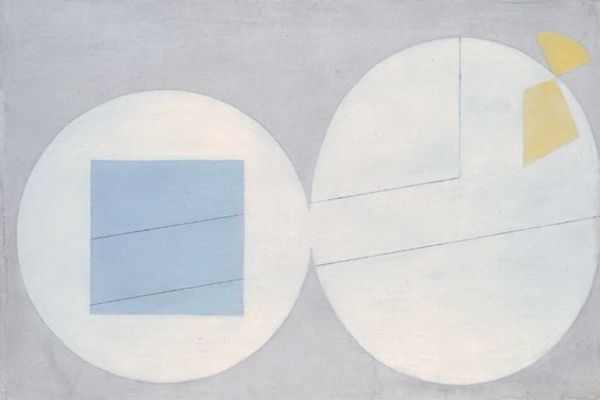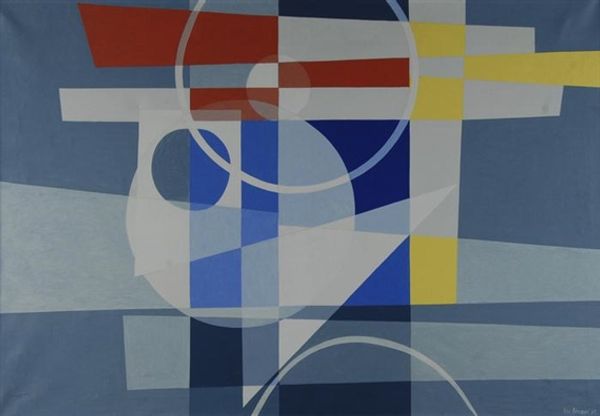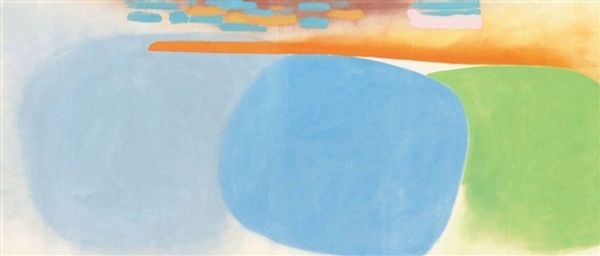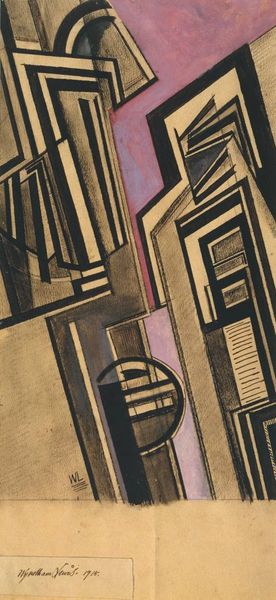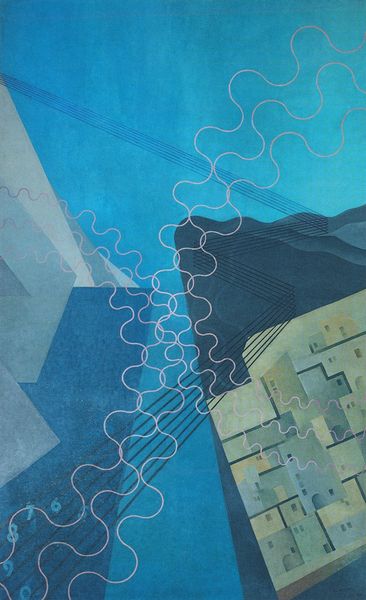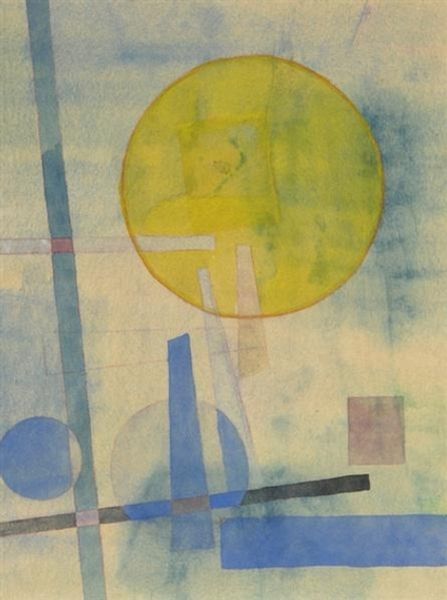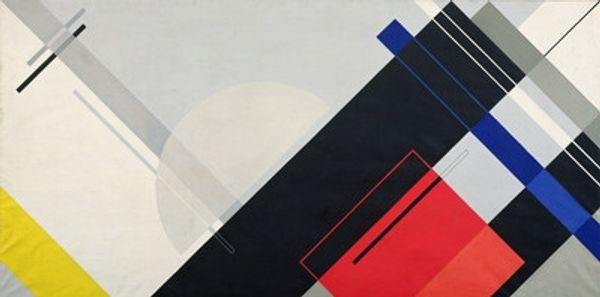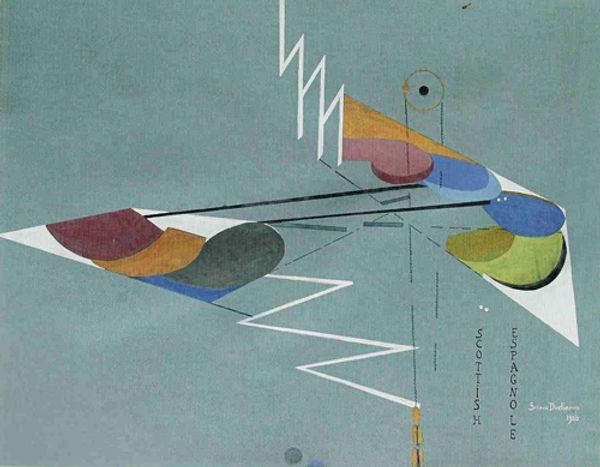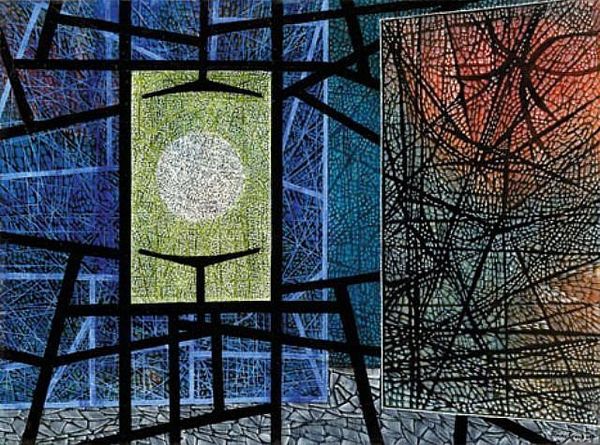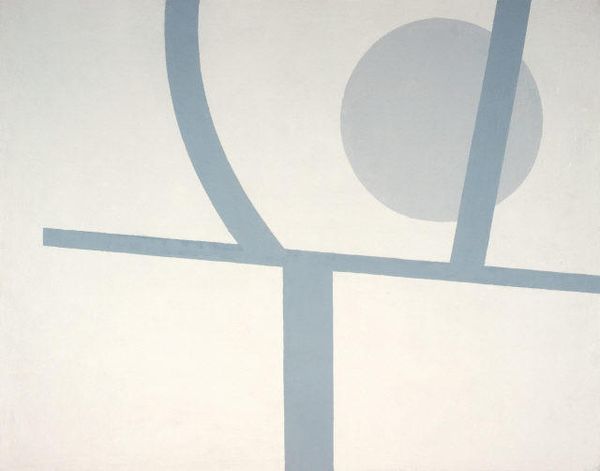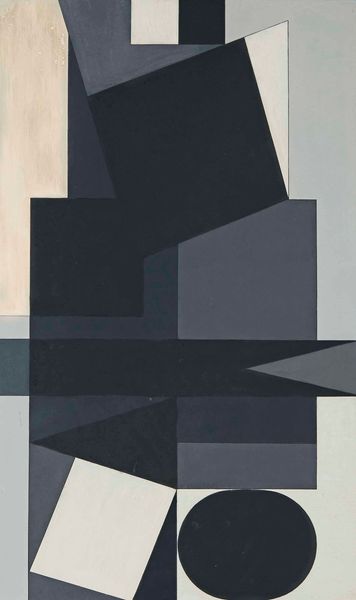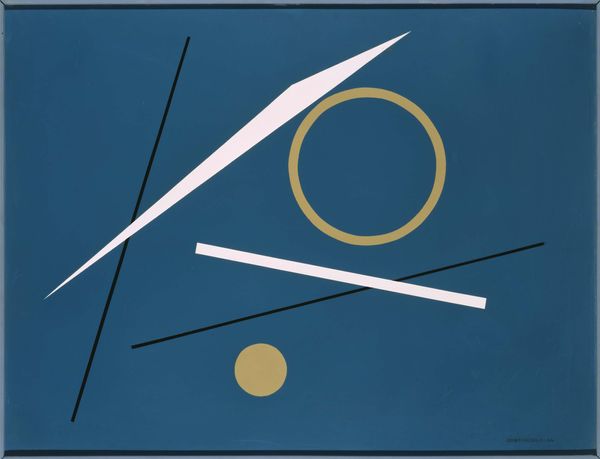
painting
#
popart
#
painting
#
circle
#
pop art
#
geometric
#
abstraction
#
pop-art
#
line
Copyright: Leo Leuppi,Fair Use
Curator: Leo Leuppi's "Komposition," painted in 1960, immediately strikes me as a captivating piece of Pop Art. Editor: My eye is drawn to the bold lines cutting through the soft blues. There’s a surprising tension in this ostensibly calm composition, a play between constraint and boundless possibility. Curator: Considering its emergence, it's tempting to see the artwork as a response to the optimism and anxieties of postwar consumer culture, packaged in the visual language of abstraction. Think about how galleries shaped the pop art movement in this time period, moving it away from the traditional social commentaries we usually find. Editor: Precisely, those anxieties may come from its use of basic geometry to evoke emotions and suggest forms beyond what is seen. Notice how the sharp lines and softer curves create movement; like musical notation that can direct how we experience everything in between. Do you feel the rhythm and play, regardless of context? Curator: That’s an interesting perspective. Certainly, the clean lines speak to a broader movement toward graphic design and advertising. To further its pop art feel, you must also appreciate how the artist used different shades of blues to fill it out, using an easy-to-appreciate pattern to represent familiar, and in this case nautical, concepts. The lines and basic shapes would look commonplace at a dockyard. Editor: Nautical is a possibility. Even if unintentional, that creates a subtle feeling. Regardless of your suggested external circumstances, "Komposition" achieves a visual harmony through a structured, almost mathematical elegance. Curator: Absolutely, and I believe its enduring appeal lies in its ability to both capture a specific cultural moment and transcend it through the formal qualities you highlighted. By understanding Leuppi's historical role, it is an easier entry point for most. Editor: Perhaps. The dialogue between those intersecting lines and fields of color create their own reality; complete and unburdened by our external narratives. Thanks, that gave me another way of understanding what this abstraction attempts.
Comments
No comments
Be the first to comment and join the conversation on the ultimate creative platform.
